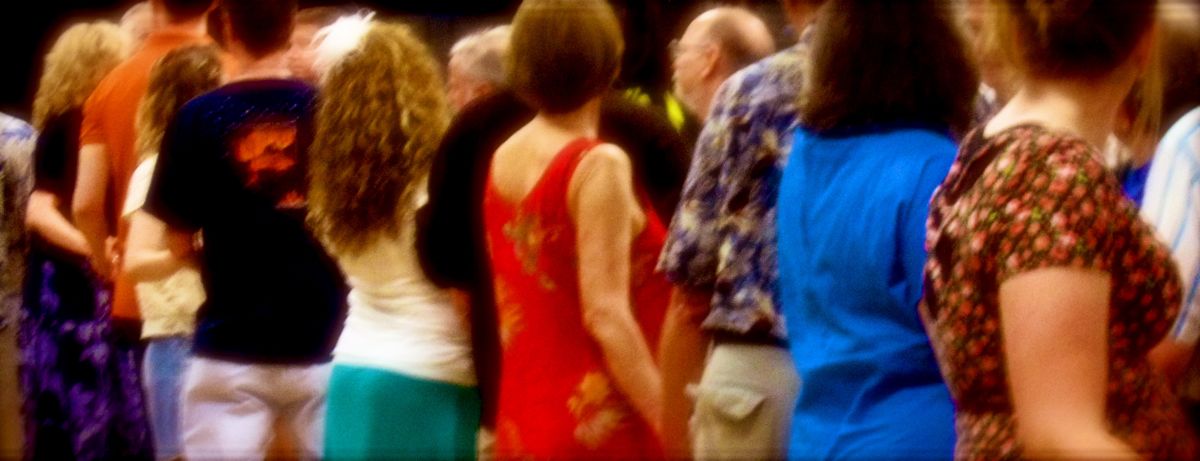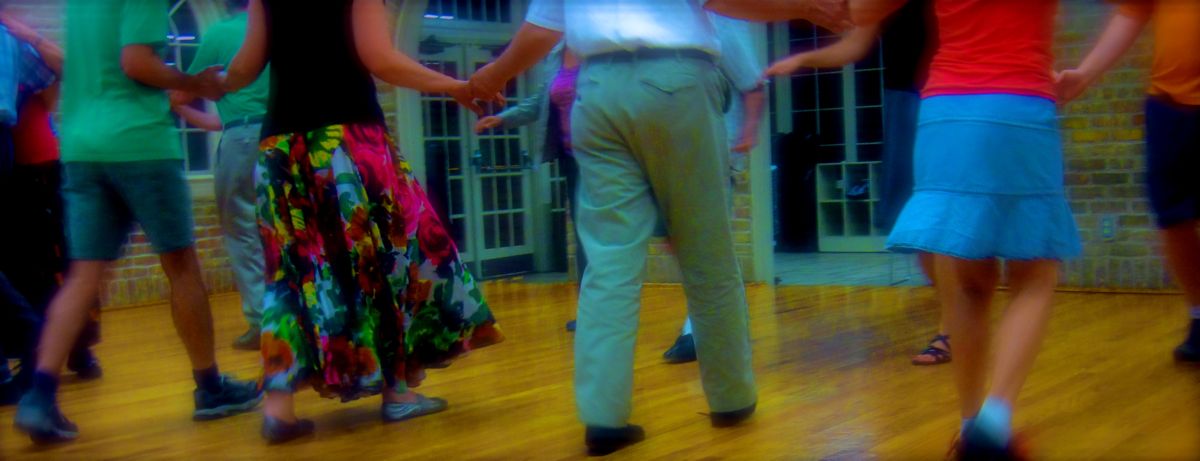What is contra dance?
Contra dance is a social folk dance with origins in traditional English, Scottish, and French dances. Contra is usually accompanied by Irish, old-time, French-Canadian, and Scottish folk tunes, but can be danced to any music with the correct timing and tempo. Contra moves are based on “walking steps”, that is, you don’t need to do any fancy footwork. However, there is a lot of room in most dances for improvisation and extra moves.
Contra is a partner dance. Each couple has a “leader” and a “follower”. Throughout the dance, you and your partner move up and down the line, dancing with “neighbors” along the way. A “caller” introduces the dance, and calls out instructions.



I’ve never danced before. Can I do contra?
If you can walk, you can dance! Contra is a very accessible dance; you don’t need any prior experience with dancing. Most of the steps are “walking steps”, meaning you can just walk through the dance! All dances are “taught” beforehand by the caller, and experienced dancers will help you along the way. Our motto is, if you’re having fun, you’re doing it right.
Come early for a short introductory lesson. It is not considered a prerequisite for joining the dance, but some people feel more comfortable having attended the introduction. Feel free to attend the introduction multiple times.
What should I bring?
Yourself, with or without a partner! Come alone, or come with friends. Generally, contra and English country dancers switch partners at the end of each dance, so there will always be someone new to dance with. We recommend beginners dance a few dances with more experienced dancers.
Comfortable clothing. There is no required clothing for contra dance! We recommend light-weight clothing, because you might get sweaty. Some people bring special dance shoes with suede-soles, other people wear socks or dance barefoot; but you can just wear (clean) sneakers.
Energy! Contra and English country dance are deceptively aerobic. Come well hydrated; you may want to bring a water bottle and/or snacks.
(Supervised) children. Contra and English country dance are family-friendly, and many children will enjoy the music and dancing. However, please make sure you keep an eye on your children at all times.
Dance etiquette
- Anyone can ask anyone to dance.
- It is customary to switch partners for each dance, and dance with a variety of people.
- Please be kind and welcoming to folks you meet on the dance floor.
- Be gentle and respect other dancers’ bodily autonomy.
- At the end of each dance, thank your partner and clap to thank the band for the lovely music.
- Take steps to avoid body odor, but please do not wear fragrances as some people have sensitivities.
- Do not bring alcohol or dance under the influence.
- If someone is making you uncomfortable, talk to a dance organizer.
Take care of yourself & others
- How to manage dizziness: It’s natural to get dizzy if you’re not used to spinning. Keep your head level and focus your gaze on your partner. You can also ask your partner to ‘please slow down’. As you dance more you’ll get less and less dizzy.
- How to hold hands: Don’t squeeze your partners hand (they should be able to move their hand away easily). During a swing, leads should place their right hand on their partner’s shoulder blade; follows should rest their hand (light!) on their partners shoulder. Don’t yank, grab, or push your partner around.
- How to be a conscientious dancer: Watch where you’re going, and try to keep your arms and elbows close to your body. If you run into someone, apologize, check that they’re okay, and then you can both get back to dancing!
- How to dance to the music: “Better never than late!” Each contra move or pattern takes a certain number of beats, and the music repeats with each repeat of the dance. Since we’re all moving together, it’s important that we keep time! If you miss a pattern, or don’t do it quite right, just move on to the next one instead of trying to fix your mistake.
- How to be polite: Ask people to dance, don’t just drag them out on the floor. Thank your partner after the dance. If someone says “no” to a dance, just ask someone else! Try to dance with a variety of people. Be respectful of people’s personal space.